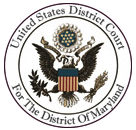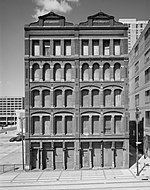250 West Pratt Street

250 West Pratt Street is a highrise building located in Baltimore, Maryland. The building stands at 360 feet (110 meters), containing 24 floors. The building was constructed and completed in 1986, designed by Skidmore, Owings and Merrill LLP., and originally developed by and for Cabot, Cabot & Forbes. The building is located in the center of Baltimore's central commercial district, and is the building most visible from Oriole Park at Camden Yards. In early 2015 Danish jewelry maker Pandora Jewelry moved 600 employees and its regional headquarters for the Americas to the building. As part of a ten-year lease, the company's logo will be added to the building, visible from the street and from Camden Yards.
Excerpt from the Wikipedia article 250 West Pratt Street (License: CC BY-SA 3.0, Authors, Images).250 West Pratt Street
West Pratt Street, Baltimore
Geographical coordinates (GPS) Address External links Nearby Places Show on map
Geographical coordinates (GPS)
| Latitude | Longitude |
|---|---|
| N 39.2867 ° | E -76.6188 ° |
Address
250 West Pratt Street
West Pratt Street 250
21201 Baltimore
Maryland, United States
Open on Google Maps







